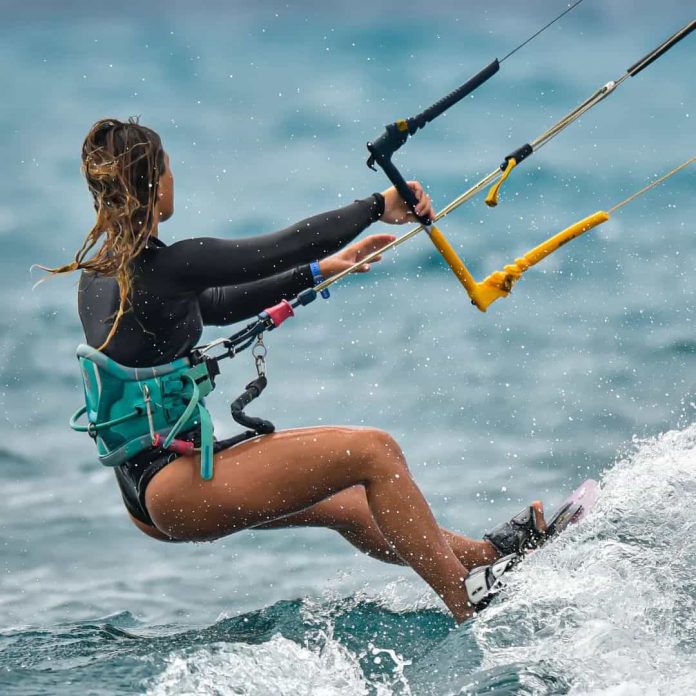Boasting a tropical climate, Costa Rica is full of beautiful natural scenery. But there is another topic that has made this country popular all over the world. That is kitesurfing. So we thought this article would explore the dynamic world of Kitesurfing in Costa Rica and the unique experiences it offers adventure enthusiasts.
Important Things To Know Before Go Kitesurfing In Costa Rica
What is kitesurfing?
Kitesurfing is a combination of several water sports such as surfing, windsurfing, paragliding, and skateboarding. Some people call it kiteboarding. This sport started to become popular in the world in the late 1970s as a recreational activity, but even though the name of this sport is surfing, but does not require waves like surfing. The only thing needed to get the power needed for the game is the sea breeze. The basic process of this sport is to glide over flat water using a small parachute-type kite on a soft board with a flat bottom attached to the foot but you have to control the board with your feet and control the Parasuit with your hands.
Why Costa Rica for Kitesurfing?
Costa Rica stands out as a kitesurfing haven for several compelling reasons, making it an ideal destination for enthusiasts seeking the perfect blend of adventure, nature, and community. Let’s figure out one by one
- Diverse and Reliable Wind Conditions
Costa Rica’s topography provides a wide range of wind conditions for kitesurfers from the vast Pacific Ocean and the Caribbean Sea. By traveling to the sides of the nation, players may locate the swift and steady winds coming from the Pacific Ocean or the calm and pleasant breezes coming from the Caribbean Sea. Because of this, there are options for riders of all skill levels.
- Abundance of Pristine Beaches
There are many beautiful beaches on either side of the country, each with its own unique charm. From the famous Tamarindo Beach on the Pacific side to less crowded gems like Punta Uva on the Caribbean coast, kitesurfers have plenty of options to choose their playground based on preferences for wave size, wind patterns, and overall beach experience.
- Warm Tropical Climate
Costa Rica’s warm tropical climate ensures that many activities can be enjoyed year-round. With average temperatures ranging from 70°F to 90°F (21°C to 32°C), kitesurfers can pursue their passions without worrying about extreme weather conditions, making it an inviting destination for kitesurfing enthusiasts worldwide.
- Welcoming Community
Costa Rica kitesurfing community is renowned for its friendliness and diversity. You’ll discover a friendly community eager to share their love of the game with you by offering advice, techniques, and more, regardless of your level of experience. These feelings of camaraderie forge enduring bonds with like-minded individuals and enrich the whole experience.
- Varied Landscapes and Scenic Backdrops
Costa Rica has a lot to offer in terms of stunning scenery and destinations outside of beaches. You may spend your non-gaming days exploring inland and getting up close and personal with diverse of animals, waterfalls, beautiful jungles, and breathtaking sunsets. Adventure sports mixed with breathtaking scenery produce a great experience that’s beyond the surge of excitement.
- Accessibility to Professional Instruction
Costa Rica offers accessible and professional instruction for all skill levels. Many popular kitesurfing spots have reputable schools and instructors, making it an excellent destination for beginners looking to embark on their journey or seasoned riders aiming to enhance their skills.
Basics of Kitesurfing
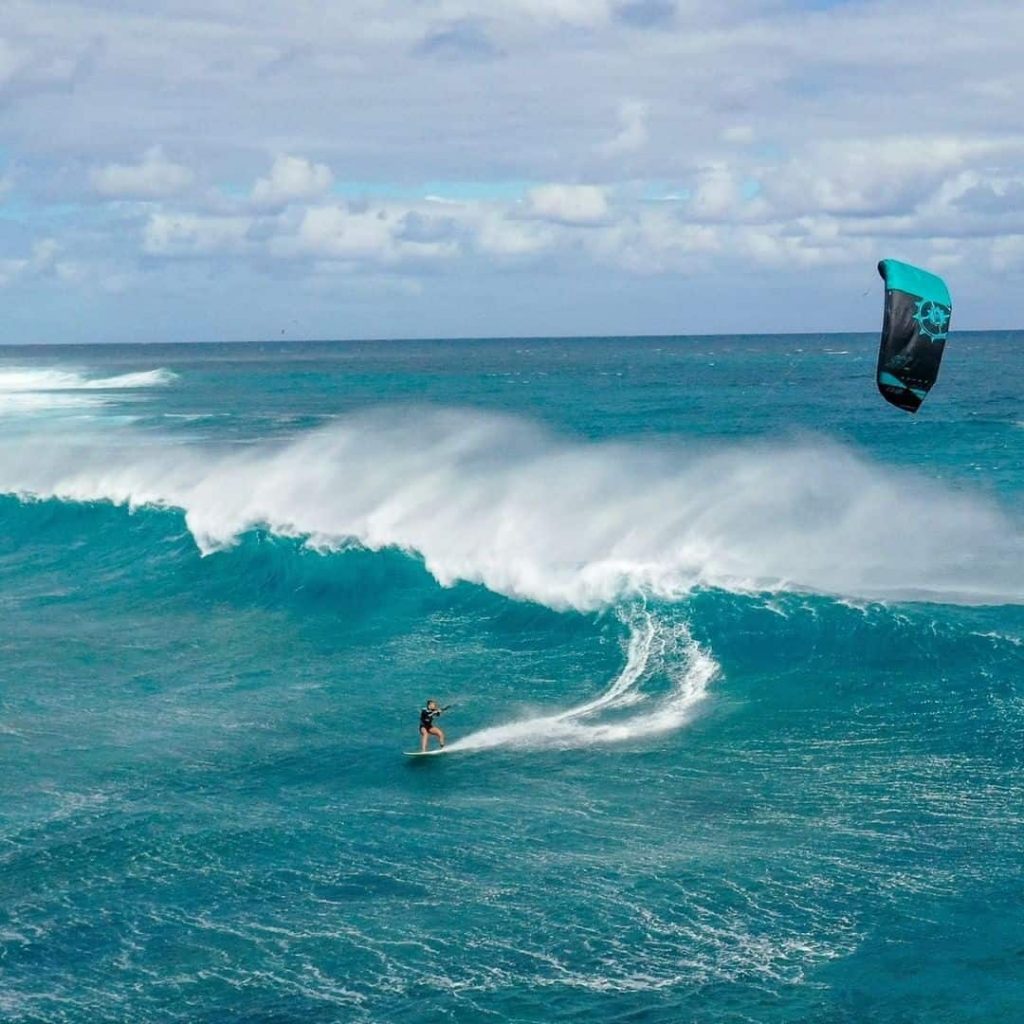
Let us now look at what basic skills and knowledge are essential for safe and enjoyable participation in this fun sport.
- Understanding Wind Dynamics:
Recall that the main factor behind kitesurfers’ movement through the water is wind. To become an expert at the sport, you must understand the wind’s direction, speed, and best uses. You can fly the kite more skillfully if you understand wind windows(the space in which the kite operates), the area in which the kite functions, and wind patterns unique to the kite.
- Kite Control:
It is necessary to master kite control. This entails managing the power of the kite, guiding, and regulating its motions with the control bar. A good kitesurfing session requires the ability to launch, land, and control the kite with accuracy and ease.
- Board Control:
Riding the board involves proper body positioning, balance, and edging. Kitesurfers need to understand how to position their feet on the board, control their direction, and maintain stability while riding through waves.
- Safety Protocols:
Safety precautions are crucial. A safer experience is ensured by utilizing safety equipment including helmets, safety leashes, and harnesses, as well as by being aware of safety regulations and emergency protocols. Other essential components of safety include knowing the right-of-way in congested seas and practicing self-rescue.
- Body Dragging and Water Starts:
Beginners frequently practice body drag—moving across the water using the kite’s power—before jumping on the board. This is because one of the key steps in the progression to riding is mastering water initiation, which entails moving from pulling the body to standing on the board and controlling the kite.
- Lessons and Practice:
Professional lessons from certified instructors are highly recommended for beginners to the sport. Because of this, the lessons cover the basics well and provide practical guidance making the learning curve smoother. Constant practice and gradual skill progression are imperative to mastering the basics of Kitesurfing.
The necessary equipment for Kitesurfing in Costa Rica
Kite
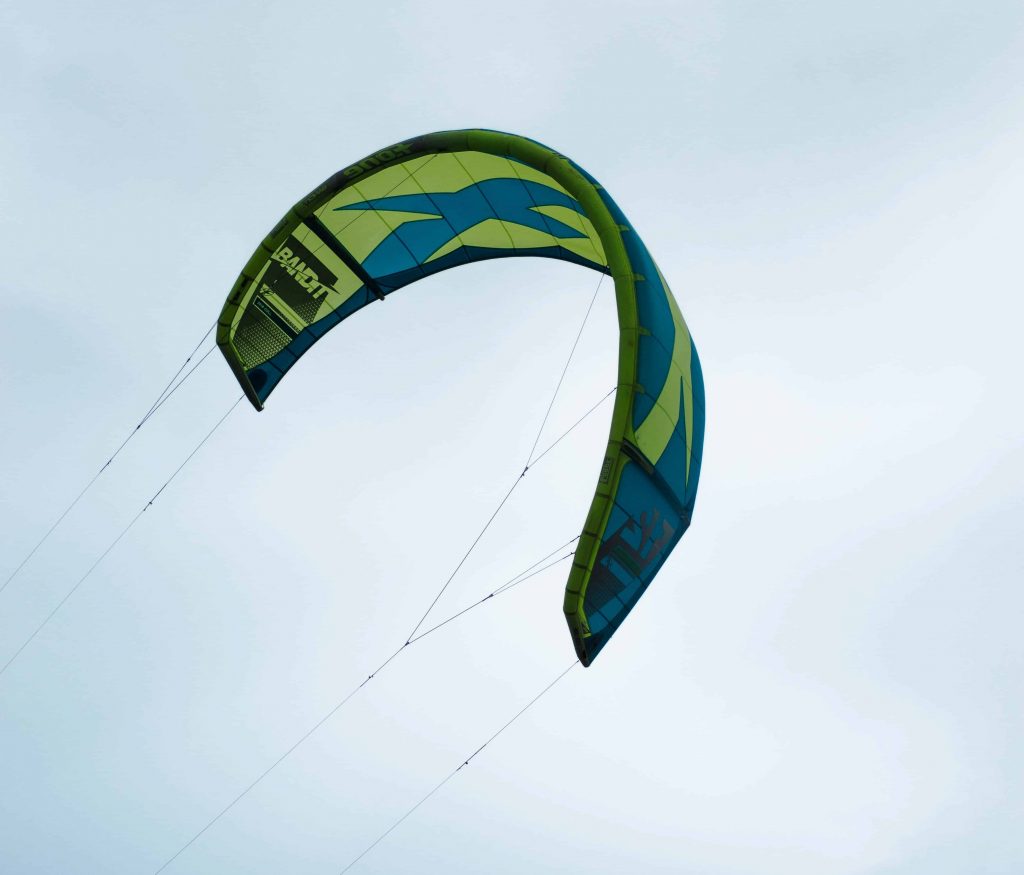
The kite is the main power source that gathers the wind here. there are a variety of kites specially designed for this purpose, but the most popular are kites with wind-blown tubes that are easy to control. the kite is easy to float because the inflated parts help it hold its shape due to the wind. it is better to choose a suitable size of kite depending on the strength of the wind and the size of the player
Type of kites
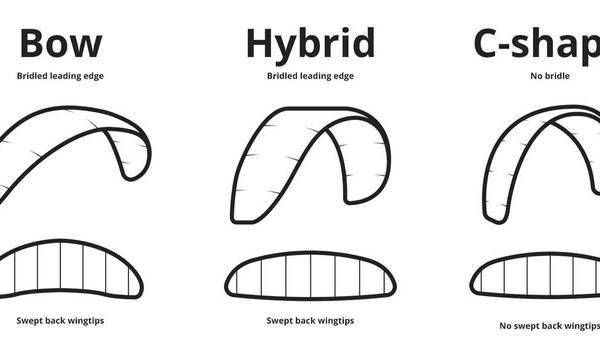
The only type of kite used before 2006 was the C-kite. c kites are so named because they form the letter c with a very curved shape. this was a small kite. but in 2006, bow kites were introduced to the market, bow kites are named because of their flat shape with a bend similar to a bow. A bow kite gives more power than a c kite. overall bow kite offers a huge improvement in safety, very easy re-launch on the water, and ease of use. now hybrid kites are available in the market as a combination of both these kites.
Board
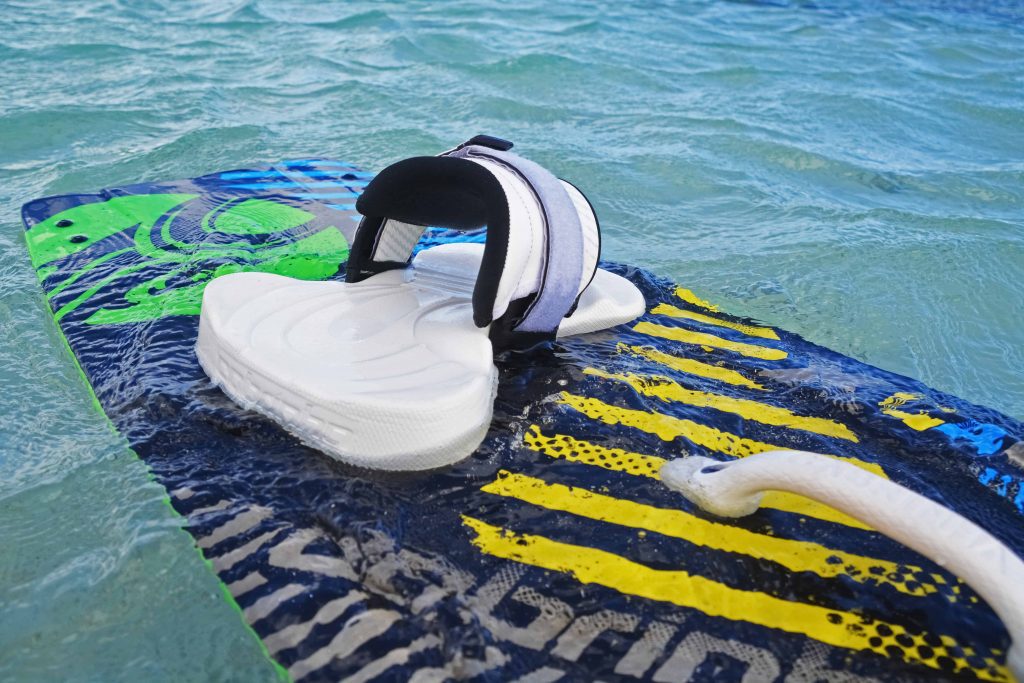
These boards are very similar to surfboards and beginners use larger boards like surf beginners because of the ease of getting on the board and the ease of keeping the board balanced on the water. later they use smaller boards as the game progresses. regarding the size of the boards used, the range of the boards’ size is 125-150cm in length and 38-45cm in width.
Control devise and ropes
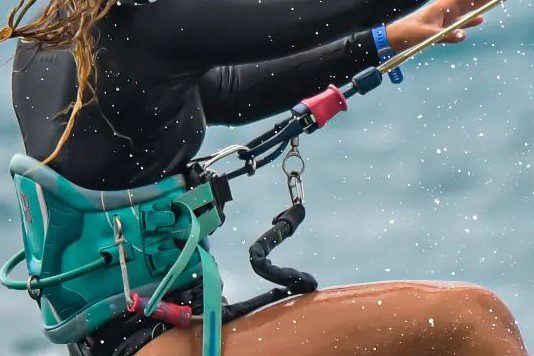
There are four or five cables that go from your controller to the kite during Kitesurfing. These are unique water-floating ropes. A belt around your midsection connects you to the kite, and the kite is tied to the belt. This means that even if the kite escapes your grasp, your bond with it will still be intact.
Best Time To Kitesurfing in Costa Rica
The country enjoys a long season with strong, consistent winds and good water levels to suit every style of kite surfer, from beginner to advanced. the west coast exposed to the Pacific Ocean has many best Kitesurfing spots in Costa Rica. the main season runs from November to May and the best time is between December and March. during this time, the main kite surfing spots usually enjoy winds of only 18-23 knots daily- but it is common for some spots to get more than 25 knots on certain days.
Top Kitesurfing Spots in Costa Rica
Bahia Salinas bay
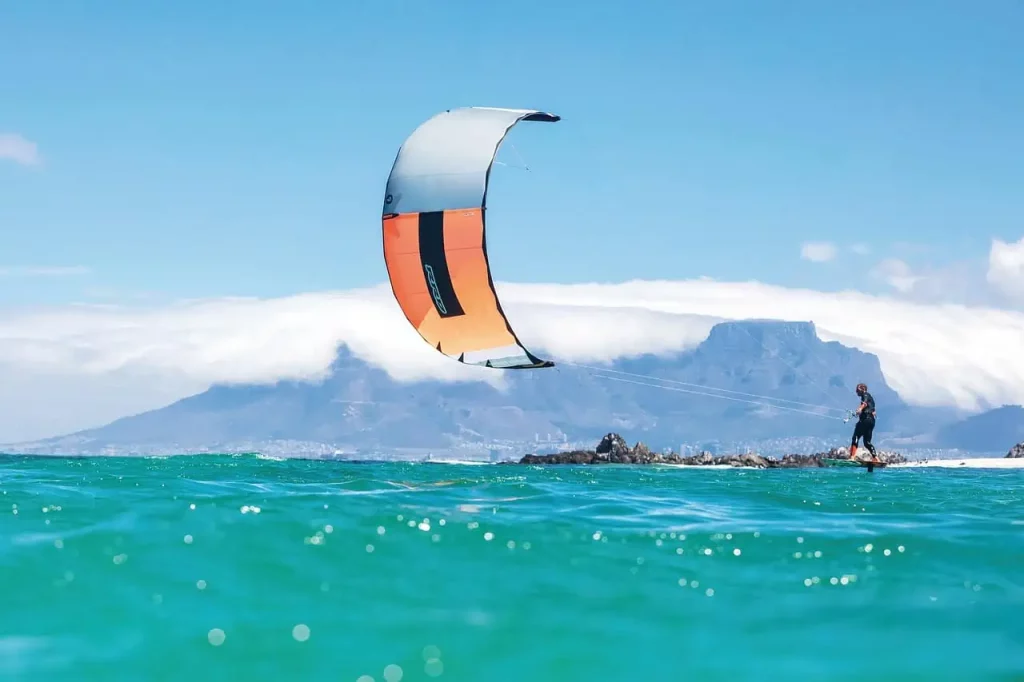
The capital of Kitesurfing is Bahia Salinas Bay which is a stunning spot located northwest of Guanacaste, very close to Nicaragua. it is the natural border that separates Costa Rica and Nicaragua. its pristine and scenic beaches as well as its windswept bay area are famous for Kitesurfing.
The large, crescent-shaped bay is surrounded by a reef just outside the open sea, keeping the waters inside the bay calm. strong winds are often quite rough in the area, but steady light winds blow in the afternoon. although the interior of the lagoon is flat and has small, gentle waves, it can be choppy when the wind picks up. the place is ideal for beginners and intermediate riders to improve their skills. the area has several beaches, including Papaturro, coyote, and copal. Many establishments throughout the bay offer all the services you need when it comes to equipment rentals and lessons.
Copal Beach is a paradise offering the best wind conditions for almost 200 days, from March to November. this is an ideal place for someone looking to indulge in this extreme sport. experienced kite surfers tend to gravitate to this beach. however, it is a perfect fit for beginners or anyone looking to improve their skills.
Lake Arenal
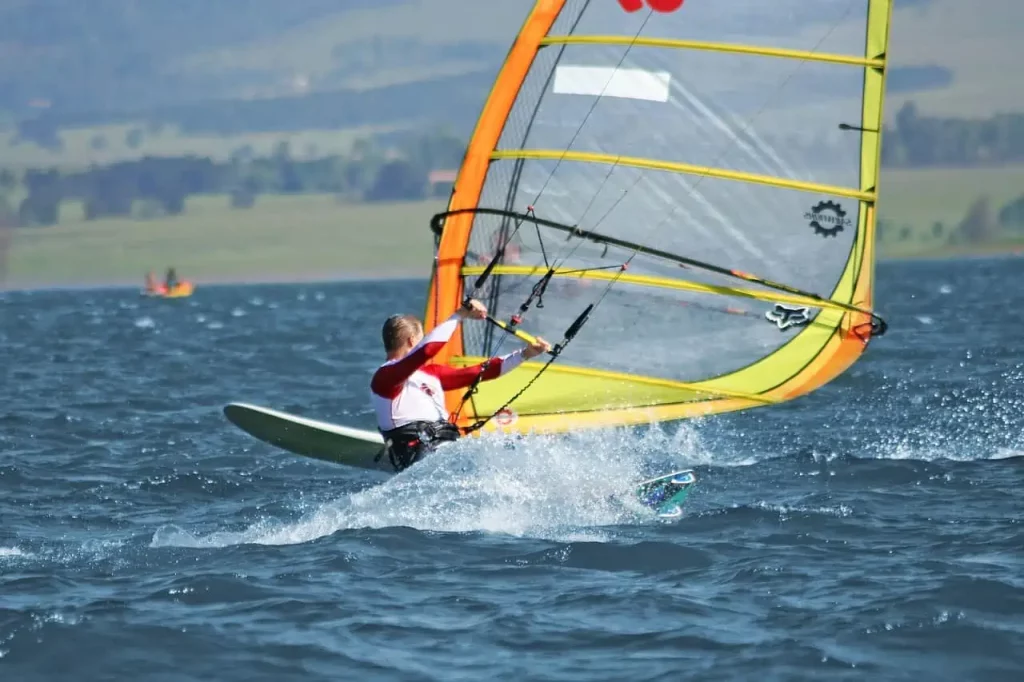
Lake Arenal is the largest lake in Costa Rica. also, the constant wind flow here provides good support for water sports. the beautiful lake created due to the dam built to generate hydroelectricity is perfect for water sports Windsurfing is considered the best sport on Lake Arenal.
Several places near the lake offer kite surfing equipment rentals and classes. perfect wind conditions and beautiful scenery make Lake Arenal one of the best Kitesurfing spots in Costa Rica.
Malpais and Saint Teresa
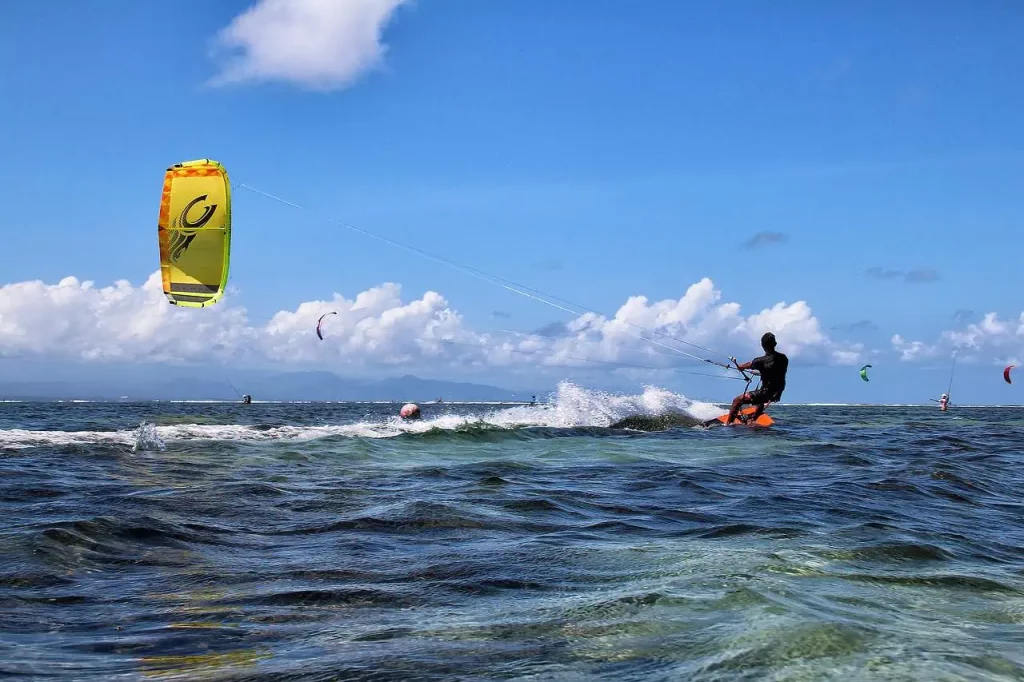
Malpais and Santa Teresa, nestled on the Nicoya Peninsula in Costa Rica, offer an exceptional Kitesurfing experience. With consistent cross-shore winds blowing from December to April, and reliable trade winds from May to November, these areas cater to all at any skill level.
The coastline boasts vast, uncrowded beaches with ideal conditions for both beginners and advanced. Lesson schools and rental shops on the shoreline provide equipment and safety briefings. The region’s laid-back atmosphere, stunning sunsets, and diverse marine life add charm to the Kitesurfing escapade. Accommodations range from budget-friendly hostels to luxury beachfront villas, ensuring comfort for all visitors. Exploring beyond beaches and activities reveals lush jungles, wildlife reserves, and a vibrant local culture. Travelers can indulge in yoga retreats, delicious cuisine, and rejuvenating spa experiences after an exhilarating day on the water.
Playa Saint Teresa
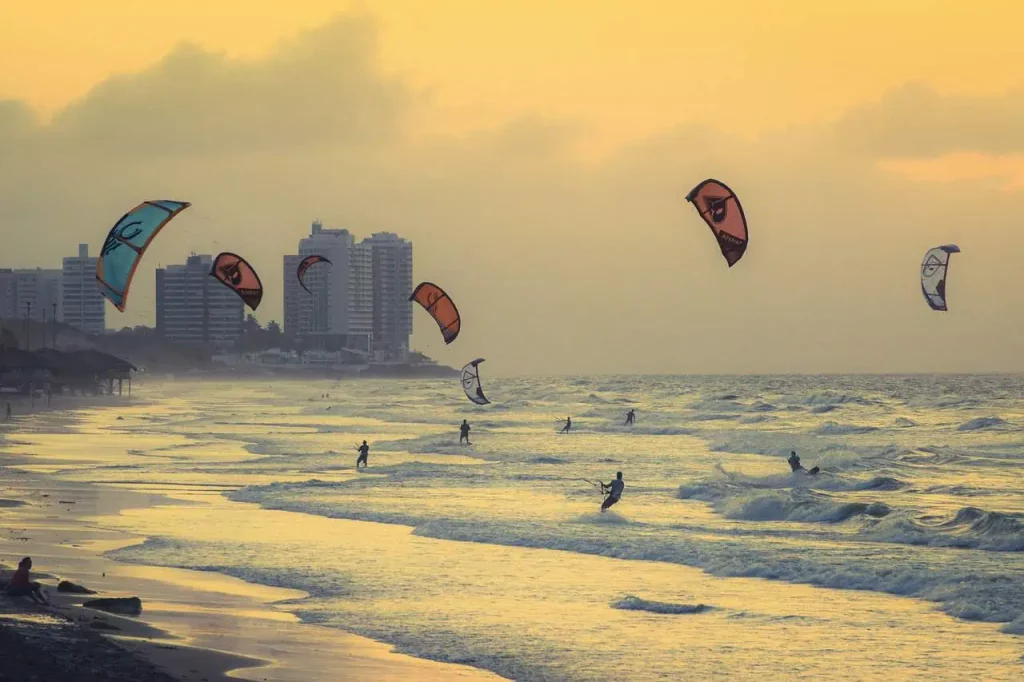
World-class Kitesurfing conditions and stunning natural surroundings can be found at Playa Santa Teresa. For Kiteboarders of all skill levels, from novices to experts, this beach’s immaculate white sand and crystal-clear waves make it a haven. It’s also the best spot for surfing because of the strong, steady waves.
In addition, Playa Santa Teresa offers a relaxed atmosphere and is full of cozy beach bars, yoga studios, and charming accommodations. The surrounding lush forests offer opportunities for hiking, wildlife viewing, and exploring nearby waterfalls. Indulge in the lively surfing culture, savor mouthwatering regional food at coastal eateries, and take in breathtaking sunsets. For anyone seeking the ideal blend of action, leisure, and scenic beauty during their Costa Rican holiday, Playa Santa Teresa is an absolute must-see.
Playa Hermosa
Playa Hermosa, located on the Pacific coast of Costa Rica, stands as a paradise for watersports enthusiasts. With its consistent cross-onshore winds averaging around 20-30 knots, this spot offers optimal conditions for Costa Rica Kitesurfing throughout the year. The wide sandy beach and warm waters create a perfect setting for both beginners and advanced riders. Kitesurfers can relish the expansive space and enjoy smooth rides amidst breathtaking views.
The peak season at Playa Hermosa typically aligns with Costa Rica’s dry season, from December to April, offering the most reliable wind conditions. Several reputable schools operate in the area, providing lessons, equipment rental, and guidance for all skill levels. Additionally, the vibrant community here adds to the welcoming atmosphere, fostering a sense of camaraderie among enthusiasts. Travelers can find various accommodations nearby, ranging from beachfront hotels to cozy rentals, ensuring a comfortable stay within easy reach of the many Kitesurfing spots in Costa Rica.
Playa el carmen
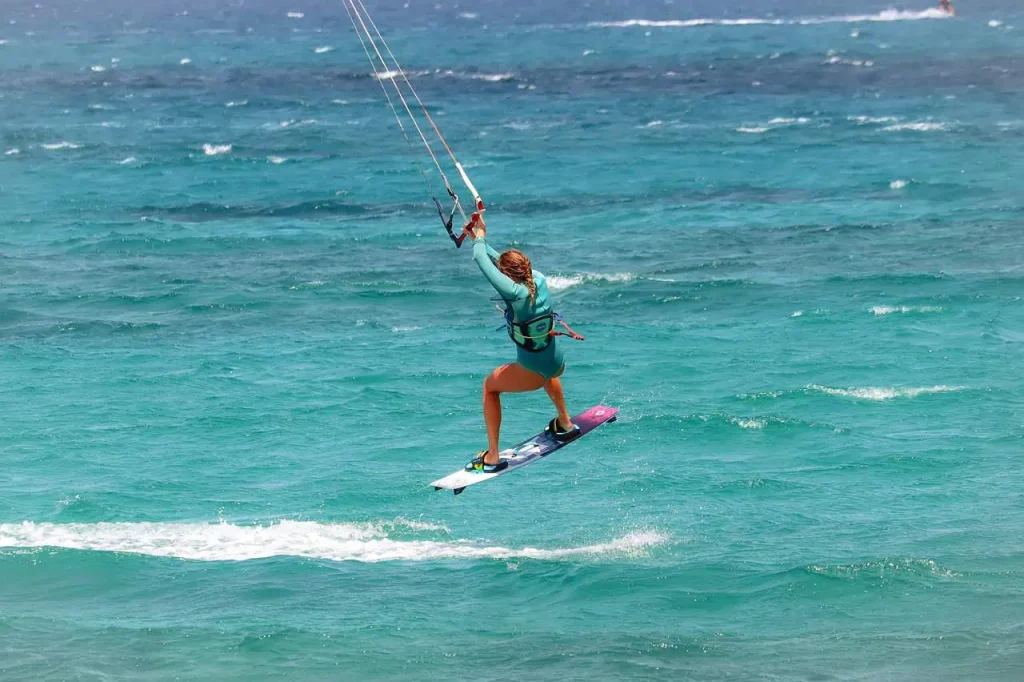
Playa El Carmen offers an unmatched experience due to its consistent winds, expansive beach, and stunning surroundings. Located on the Nicoya Peninsula in Costa Rica, this spot boasts reliable cross-shore winds ranging from 15 to 25 knots during the windy season from December to April, making it perfect for both beginners and advanced Kitesurfers. The wide sandy beach provides ample space for launching and landing, with shallow waters ideal for beginners.
Numerous kite schools and rental shops are available for gear and lessons. The area features a vibrant community, offering a friendly atmosphere and opportunities for shared experiences. Additionally, Playa El Carmen provides nearby accommodations, restaurants, and amenities, ensuring a comfortable and fulfilling Kitesurfing adventure amidst the beauty of Costa Rica’s coastline.
Playa pavones
Kitesurfing in Playa Pavones offers an exhilarating experience amidst stunning natural beauty. The beach boasts consistent winds, especially during the dry season (December to April), ideal for Kitesurfing. Located on the southern Pacific coast of Costa Rica, Playa Pavones provides ample space and a mix of sandy beaches and rocky terrain, accommodating both beginners and experienced riders. The expansive beach area allows for comfortable launches and landings, while the consistent cross-onshore winds create excellent conditions for thrilling rides.
Kitesurfers can expect wind speeds ranging from 15 to 25 knots, perfect for practicing tricks and jumps. Certified instructors and kite schools are available for lessons, ensuring safety and skill enhancement. Additionally, the area offers accommodation options, local eateries, and a laid-back atmosphere, making Playa Pavones one of the idyllic Kitesurfing spots in Costa Rica for enthusiasts who seek both adventure and relaxation.
Conclusion
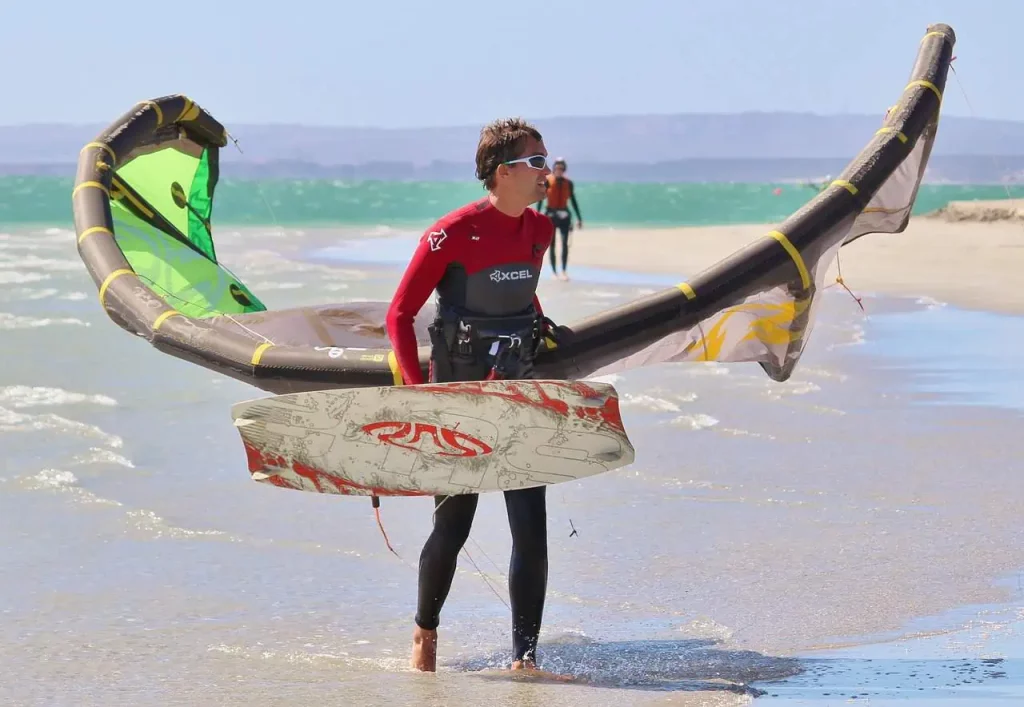
Kitesurfing in Costa Rica isn’t just about riding waves; it’s an immersive experience that intertwines adventure, community, and environmental consciousness. The combination of world-class spots and a thriving culture makes Costa Rica an unparalleled destination for enthusiasts seeking both thrill and connection.
Find more 34 kitesurfing spots in Costa Rica
FAQs
- Is Costa Rica Kitesurfing suitable for beginners?
Absolutely! With various spots catering to different skill levels and ample opportunities for lessons, Costa Rica welcomes beginners in the realm.
- Do I need to bring my equipment to Costa Rica?
While some prefer their gear, many Kitesurfing spots in Costa Rica offer equipment rentals and lessons, making it convenient for travelers.
- Are there any environmental initiatives within the Costa Rican community?
Yes, the community actively participates in beach clean-ups, conservation projects, and awareness campaigns to protect the stunning coastal environment they enjoy.
- Are there age restrictions for Kitesurfing in Costa Rica?
While there might not be strict age restrictions, it’s recommended that participants have the physical strength and maturity to handle the equipment and conditions safely.


